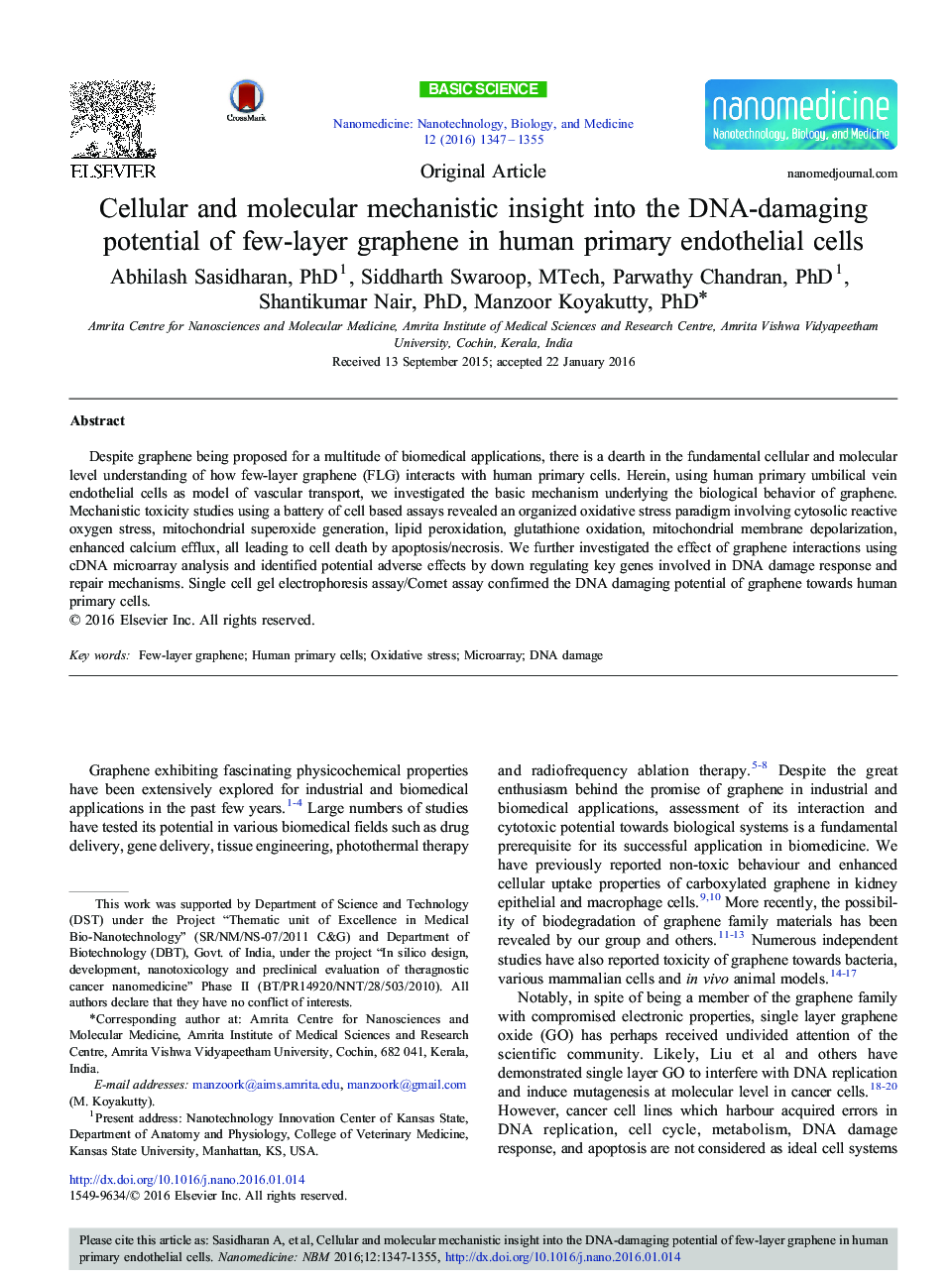| کد مقاله | کد نشریه | سال انتشار | مقاله انگلیسی | نسخه تمام متن |
|---|---|---|---|---|
| 877360 | 911018 | 2016 | 9 صفحه PDF | دانلود رایگان |

Despite graphene being proposed for a multitude of biomedical applications, there is a dearth in the fundamental cellular and molecular level understanding of how few-layer graphene (FLG) interacts with human primary cells. Herein, using human primary umbilical vein endothelial cells as model of vascular transport, we investigated the basic mechanism underlying the biological behavior of graphene. Mechanistic toxicity studies using a battery of cell based assays revealed an organized oxidative stress paradigm involving cytosolic reactive oxygen stress, mitochondrial superoxide generation, lipid peroxidation, glutathione oxidation, mitochondrial membrane depolarization, enhanced calcium efflux, all leading to cell death by apoptosis/necrosis. We further investigated the effect of graphene interactions using cDNA microarray analysis and identified potential adverse effects by down regulating key genes involved in DNA damage response and repair mechanisms. Single cell gel electrophoresis assay/Comet assay confirmed the DNA damaging potential of graphene towards human primary cells.
Graphical AbstractSystematic mechanistic studies conducted to investigate the cellular and molecular effects of few-layer graphene (FLG) with human umbilical vein endothelial cells (HUVECs) revealed toxicity exerted by FLG to be independent of cellular uptake and/or direct interaction with cellular organelles or DNA. FLG at concentrations as low as 5 μg mL− 1, and with less internalization critically altered regular cell functions, orchestrating an organized oxidative stress paradigm exerting indirect or secondary genotoxicity in human primary endothelial cells.Figure optionsDownload high-quality image (313 K)Download as PowerPoint slide
Journal: Nanomedicine: Nanotechnology, Biology and Medicine - Volume 12, Issue 5, July 2016, Pages 1347–1355